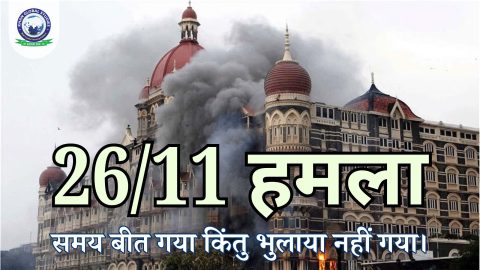26/11 Attack: History, Events and Impact
The 26/11 attack is a dark chapter in Indian history that shook the entire country. This terrorist attack took place in Mumbai on 26 November 2008 and lasted for three days. This attack shook not only India but the whole world. Let us discuss this incident’s history, events and impacts in detail.
Background of the 26/11 Attack
The 26/11 terrorist attack was organized and conducted by the Pakistani terrorist organization Lashkar-e-Taiba. This attack was planned months in advance and the terrorists were given special training. These terrorists targeted Mumbai, the economic capital of India, as it is the business and cultural center of the country.
The purpose behind this attack was to create an atmosphere of terror in India and attract international attention. The terrorist organizations based in Pakistan had made a precise and detailed strategy to execute this attack plan.
Beginning of the Attack and the Sequence of Events
- Night of 26 November 2008: On the night of 26 November 2008, 10 trained terrorists entered Mumbai by sea. They reached India from Karachi via a fishing boat.
- First Attack: Chhatrapati Shivaji Terminus (CST): The terrorists first targeted Chhatrapati Shivaji Terminus (CST) railway station. There was indiscriminate firing here, in which hundreds of people were killed and many were injured. This attack was carried out with extreme cruelty.
- Taj Mahal Hotel and Oberoi Trident: The terrorists took over famous hotels like Taj Mahal Hotel and Oberoi Trident. Many foreign nationals and Indians were taken hostage in these hotels. The terrorists also carried out arson and bomb blasts in these hotels.
- Nariman House: Nariman House, the center of the Jewish community, was also a major target of the terrorists. There was fierce firing and a hostage situation here. Many innocent people lost their lives in this attack.
- Cafe Leopold: The Cafe Leopold, which is very popular among foreign tourists, was also attacked by terrorists. This attack was a direct blow to the free-thinking and cultural diversity of Mumbai.
Response of National Security Force
After this attack, the National Security Guard (NSG), Mumbai Police and other security forces were immediately put into action. NSG commandos conducted large-scale operations to stop the terrorists.
- Operation Black Tornado: In this operation that lasted for three days, the security forces tried to free the hostages held in Taj Mahal Hotel, Oberoi Trident and Nariman House. In this operation, the terrorists were killed and the hostages were safely evacuated.
- Arrest of Ajmal Kasab: Out of the 10 terrorists involved in this attack, 9 were killed and a terrorist named Ajmal Kasab was caught alive. Kasab’s arrest revealed many important information about the plan of the attack and the conspirators behind it.
Results and Effects of the Attack
- Loss of life and property: About 166 people were killed and hundreds were injured in this attack. Those killed included police officers, NSG commandos and many innocent civilians.
- Economic and Cultural Impact: The attack caused huge damage to Mumbai’s economy. It had a negative impact on tourism and business activities.
- Changes in National Security: After 26/11, many important changes were made in India’s security system. The National Investigation Agency (NIA) was formed and the security forces were equipped with modern technology and weapons.
International Reaction
The attack was also a big warning to the international community. The US, UK and other countries assured cooperation with India in the fight against terrorism.
Conclusion
The 26/11 attack was a bitter lesson not only for India but the entire world. This incident made clear to us the imperative of security and the need to unite against terrorism. This incident reminds us that we must strengthen our security system and be prepared to fight every kind of threat against humanity.





